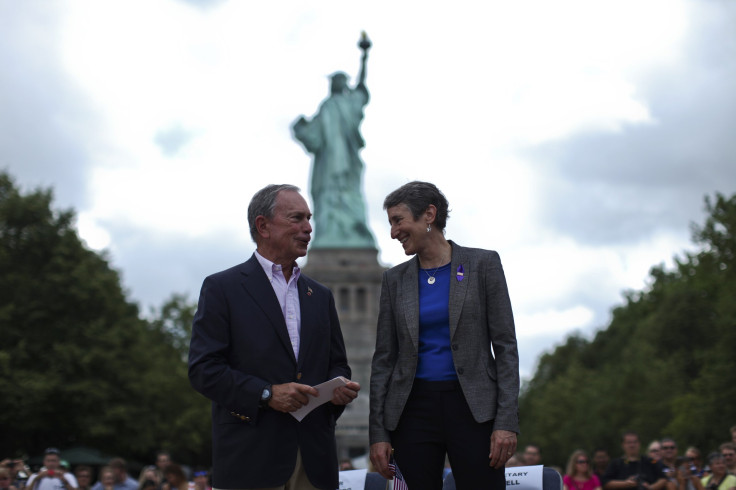Post-Government Shutdown, A New Push For Conservation And Ecotourism In US Federal Lands

If anything good came out of the 16-day government shutdown last month, it was this: Americans finally realized the importance of their often-neglected National Park Service.
The NPS chugged along withered and worn under the chopping block that was sequestration, only to come to a complete halt under a government shutdown that deprived the system of the basic funds necessary to keep gates open at 401 national parks, monuments and other sites nationwide. But on the far side of the tunnel, the park service -- and indeed the Interior Department as a whole -- has emerged with a new energy and mission.
“You don’t know what you’ve got ‘till it’s gone,” U.S. Secretary of the Interior Sally Jewell said in remarks at the National Press Club in Washington, D.C., last week, quoting a line from a Joni Mitchell song. In her first major address since taking office this spring, she laid out a strong agenda to “ensure that we pass along our nation’s rich conservation legacy to the next generation,” and chided Congress for not adding a single new acre of land for conservation since 2010.
“President Obama believes that we have a moral obligation to the next generation to leave our land, water and wildlife better than we found it,” Jewell said. “Passing along the blessings that we have inherited will take action and a commitment to take the long view, particularly in this era when our lands and waters are facing unprecedented challenges from climate change and a growing population.”
Jewell underscored the need for Congressional action in the wake of the government shutdown to support national parks, refuges, rivers and conservation lands, including full funding of the Land and Water Conservation Fund by 2015. She estimated that the closure of the National Park System alone last month cost local communities at least $76 million per day in total visitor spending.
“Protecting the special places that communities care about most and passing sustainable budgets that support our public lands are the kind of commonsense, bipartisan actions that Americans want to see Congress take -- but we cannot and will not hold our breath forever,” Jewell noted. “We owe it to future generations to act.”
As part of Jewell’s plan to balance development and ensure landscape-level planning, she issued her first Secretarial Order, calling for a department-wide mitigation strategy to ensure consistency and efficiency in the reviewing and permitting of new energy and other development projects.
Jewell was back out on the road this week as part of an effort to promote the role of public lands as “economic engines” that boost ecotourism and conservation. On Tuesday, she made an appearance at the Minnesota Valley National Wildlife Refuge to tout a new peer-reviewed report from the Fish and Wildlife Service, Banking on Nature, which showed that visitors to federal wildlife refuges generate more than $2 billion a year in economic activity, help employ more than 35,000 people and produce about $343 million in local, state and federal taxes each year.
Jewell will head to San Francisco on Thursday to kickstart an initiative to encourage young people, particularly urban youth, to engage with public lands. Recent studies have shown that the National Park Service has failed to properly engage (or employ) minorities, and Jewell’s goals include developing or enhancing partnerships in 50 cities to create opportunities for outdoor recreation and education for more than 10 million youngsters.
“For the health of our economy and our public lands, it’s critical that we work now to establish meaningful and deep connections between young people -- from every background and every community -- and the great outdoors,” Jewell said in her speech. “There’s no doubt that these goals are ambitious. That’s why we’re going to work with schools, private and nonprofit partners and communities to leverage resources to help turn this vision into a reality.”
The Interior Department manages more than 500 million acres in national parks and other public lands, accounting for about 20 percent of the nation’s total land mass. The National Park System alone hosted 279 million recreation visits in 2011, which injected more than $30.1 billion into the U.S. economy, according to industry figures released in February. Of that amount, some $13 billion went directly to local gateway communities within 60 miles of a national park.
Jewell’s speech and tour this week are meant, in part, to convince legislators to forgo some industrial profits and spend more to protect the great outdoors. It’s an argument that won’t be easily won, but Jewell promised that President Barack Obama was “ready and willing to step up where Congress falls short.”
© Copyright IBTimes 2024. All rights reserved.






















